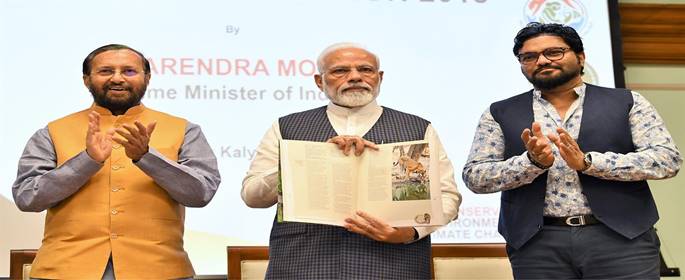



GI tag granted to Odisha
News Important for: GS Paper – 3 I Geographical Indication.
Context
Odisha was granted GI tag for the Rasagola.

About
â— The rasagola has received the Geographical Indication tag from the Registrar of Geographical Indication after years of controversy around the sweet.
â— The registration was conferred on ‘Odisha Rasgulla’ under Section 16(I) or of authorised Section 17(3)(c) of Geographical Indication of Goods (Registration and Protection) Act 1999.
â— The GI number 612 has been registered in favour of Odisha Small Industries Corporation Ltd.
â— Colour development of the ‘Odisha Rasagola’ is very speciï¬c, where without addition of external colour, various intensely coloured rasagolas are prepared using the principle of caramelisation of sugar with speciï¬c methods of preparation.
â— Both Odisha and West Bengal have been contesting the origin of the rasagola.
â— Historical records submitted say the ‘Odisha Rasagola’ has an age old tradition and is associated with world famous Puri Jagannath Temple.
What is GI tag
â— A GI is primarily an agricultural, natural or a manufactured product (handicrafts and industrial goods) originating from a definite geographical territory.
â— Typically, such a name conveys an assurance of quality and distinctiveness which is essentially attributable to the place of its origin.
â— Once the GI protection is granted, no other producer can misuse the name to market similar products. It also provides comfort to customers about the
â— GI is covered as element of intellectual property rights (IPRs) under Paris Convention for the Protection of Industrial Property.
â— At international level, GI is governed by WTO’s Agreement on Trade-Related Aspects of Intellectual Property Rights (TRIPS).
â— In India, Geographical Indications of Goods (Registration and Protection Act), 1999 governs it
Source link:
India has nearly 3,000 tigers, up by a third from 2014 count
News Important for: GS Paper – 3 I Biodiversity
Context
The tiger census conducted after 4 years shows an increment in the number of tigers in India.

Analysis
â— According to the census India has 2,967 tigers which is a third more than recorded in 2014 according to the results of a tiger census.
â— Madhya Pradesh saw the highest number at 526, followed by Karnataka (524) and Uttarakhand (442).
â— Chhattisgarh and Mizoram saw a decline in tiger population and all other States saw a “positive” increase.
â— The survey is the fourth such since 2006, is conducted once in four years.
â— The latest survey is the culmination of 15 months of forest ofï¬cials surveying millions of square kilometres of forested habitat, installing several camera traps and wildlife biologists ferreting through 35 million images of wildlife.
â— Nearly 83% of the estimated tiger population was captured in these images.
â— While Pench Tiger Reserve in Madhya Pradesh recorded the highest number of tigers, the Sathyamangalam Tiger Reserve in Tamil Nadu registered the “maximum improvement” since 2014.
Project Tiger
⮚ Aims at conserving India’s national animal i.e. Tiger.
⮚ Launched in 1973
⮚ Currently there are 47 tiger reserves
⮚ The tiger reserves are constituted on a core/buffer strategy.
⮚ The core areas have the legal status of a national park or a sanctuary, whereas the buffer or peripheral areas are a mix of forest and non-forest land, managed as a multiple use area.
⮚ The Project Tiger aims to foster an exclusive tiger agenda in the core areas of tiger reserves, with an inclusive people oriented agenda in the buffer.
â— It is a Centrally Sponsored Scheme of the Ministry of Environment, Forests and Climate Change providing central assistance to the tiger States for tiger conservation in designated tiger reserves.
â— The National Tiger Conservation Authority (NTCA) is a statutory body of the Ministry, with an overarching supervisory / coordination role, performing functions as provided in the Wildlife (Protection) Act, 1972.
â— The wild tigers are found in 18 States in India
â— The All India tiger estimation is carried out once in every four years.
Source link:
https://www.thehindu.com/news/national/nearly-3000-tigers-in-india-finds-census/article28744392.ece
Pench, Periyar rated top tiger reserves
News Important for: GS Paper – 3 I Biodiversity
Context
The tiger census conducted after 4 years rated the tiger reserves according to their progress.

Analysis
â— Madhya Pradesh's Pench sanctuary and Kerala’s Periyar sanctuary emerged as the best managed tiger reserves in the country.
â— The results are according to an evaluation of India’s 50 tiger sanctuaries released along with the 4th National Tiger Estimation (Tiger census).
â— The Dampa and Rajaji reserves, in Mizoram and Uttarakhand respectively, were left at the bottom of the ladder.
â— The top performers scored 93.75%. A score of 41% and above was marked as ‘fair’ and those 75% and above rated ‘very good.’
â— The sanctuaries, which spanned 80 States, were divided into ï¬ve geographic clusters.
â— On the whole, the Western Ghats cluster comprising reserves in Kerala, Tamil Nadu and Karnataka scored an average of 81%.
â— Kerala had the best kept reserves followed by Madhya Pradesh. Chhattisgarh was the ‘least performing State’ in reserve management.
◠Pench was a well managed reserve because it had a season wise biodiversity plan as well as flying squads and tactical patrolling for managing security.
â— There were regular meetings with local communities and funds collected from tourism were largely making it to the authorities for conservation purposes.
Source link:
Minorities panel draws its remit
News Important for: GS Paper – 1 I Society and Social welfare
Context
The National Commission of Minorities (NCM) refused to take a plea to give status of minorities to Hindus where they are in the minority.

Analysis
â— The National Commission of Minorities (NCM) has refused to entertain a plea to declare Hindus a “minority community” in those States where they do not form a majority of the population.
â— A report of its subcommittee, which was approved and adopted by the NCM highlighted that the role of the minorities commission was not to declare new minority communities but to, instead, work and ensure the progress and development of minorities and protect their religious, cultural and educational rights.
â— The NCM has no such jurisdiction to declare minorities.
â— The repository of such powers to declare a community as minority lies with the Central government.
â— The report refers to the Supreme Court’s own judgment in 1999 in Bal Patil vs Union of India which detailed the function of the NCM.
â— The court had said the constitutional goal of minority commissions is to “create social conditions where there remains no necessity to shield or protect the rights of minorities”.
â— The minority commissions have to direct their activities “to maintain the unity and integrity of India by eliminating the need for identifying communities as majority and minority”.
Source link:
https://www.thehindu.com/news/national/minorities-panel-draws-its-remit/article28752654.ece
Medical Commission Bill passed
News Important for: GS Paper – 2 I Bills
Context
Lok Sabha recently passed the National Medical Commission Bill,2019 which seeks to repeal the Indian Medical Council Act, 1956.

About
The National Exit Examination (NEXT) provisioned under the bill is believed to ensure good standard for medical students and colleges and to bring in transparency.
The national Medical Commission Bill, 2019 was introduced by the Minister of Health and Family Welfare, Dr. Harsh Vardhan in Lok Sabha on July 2019.
The Bill seeks to repeal the Indian Medical Council Act, 1956 and provide for a medical education system which ensures:
(i) Availability of adequate and high quality medical professionals,
(ii) Adoption of the latest medical research by medical professionals
(iii) Periodic assessment of medical institutions
(iv) An effective grievance redressal mechanism.

© 2025 iasgyan. All right reserved